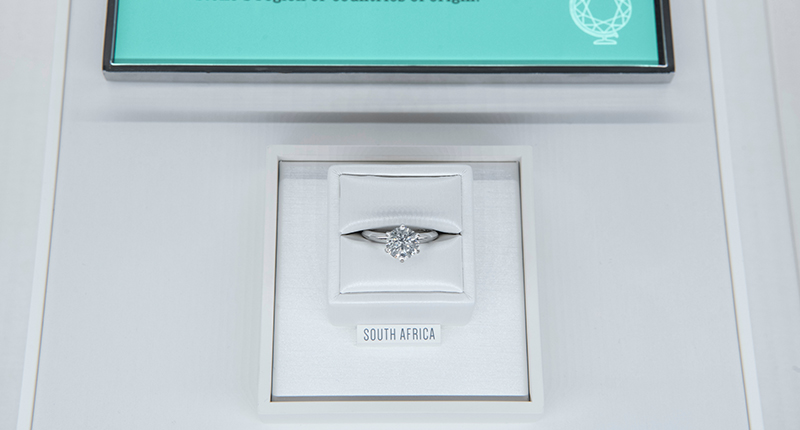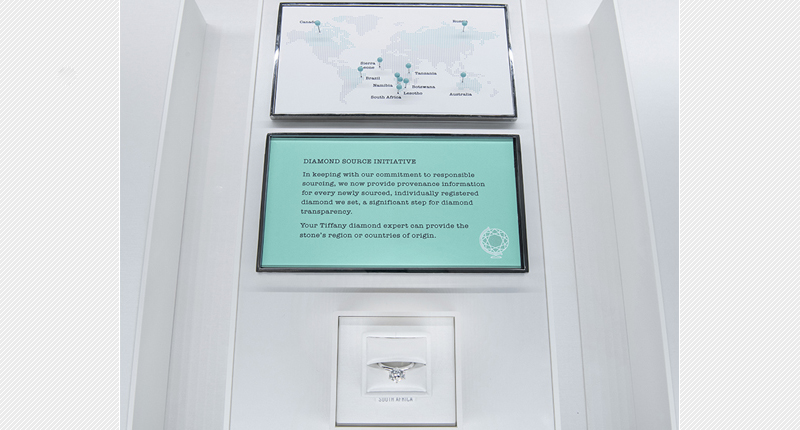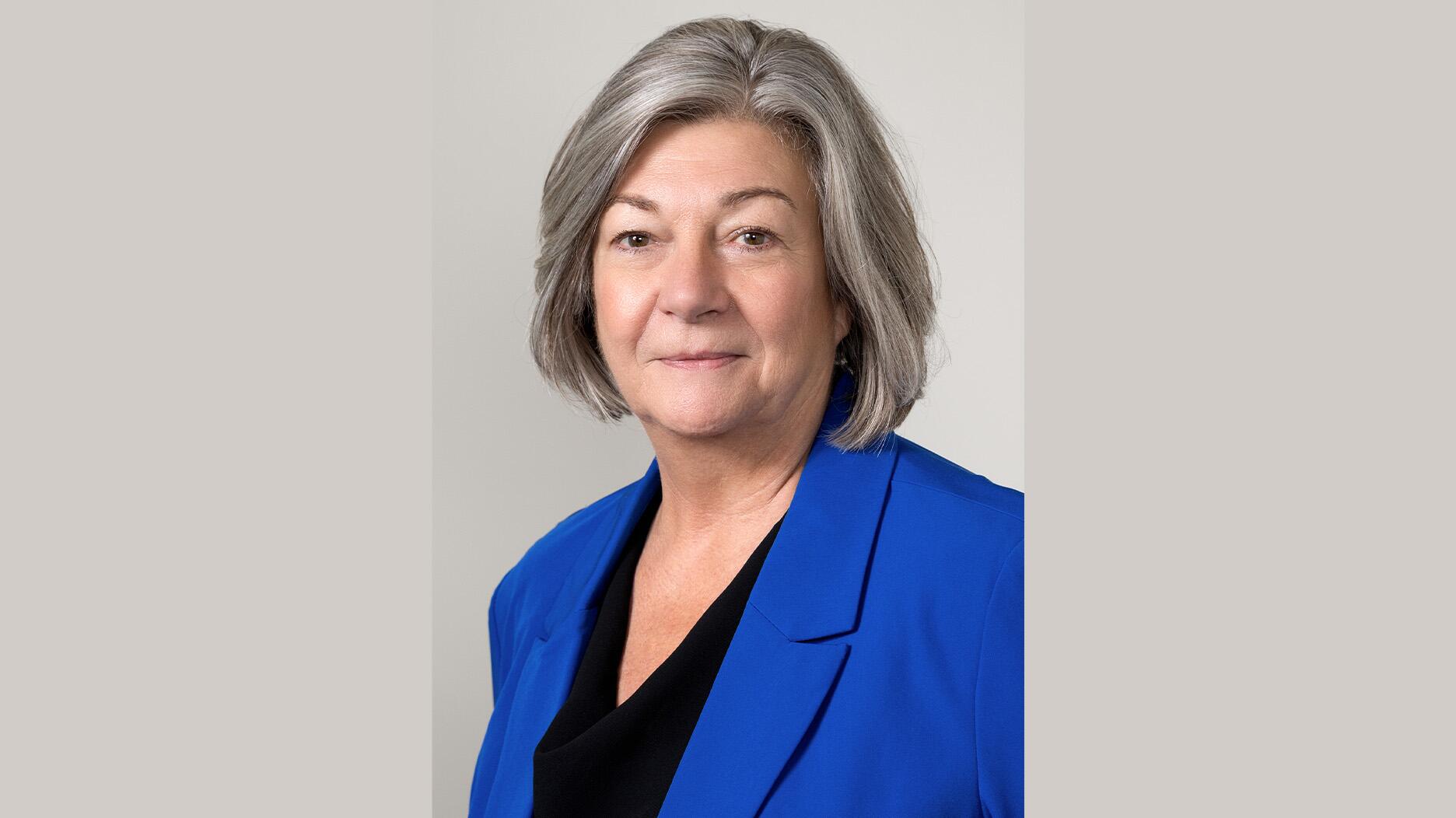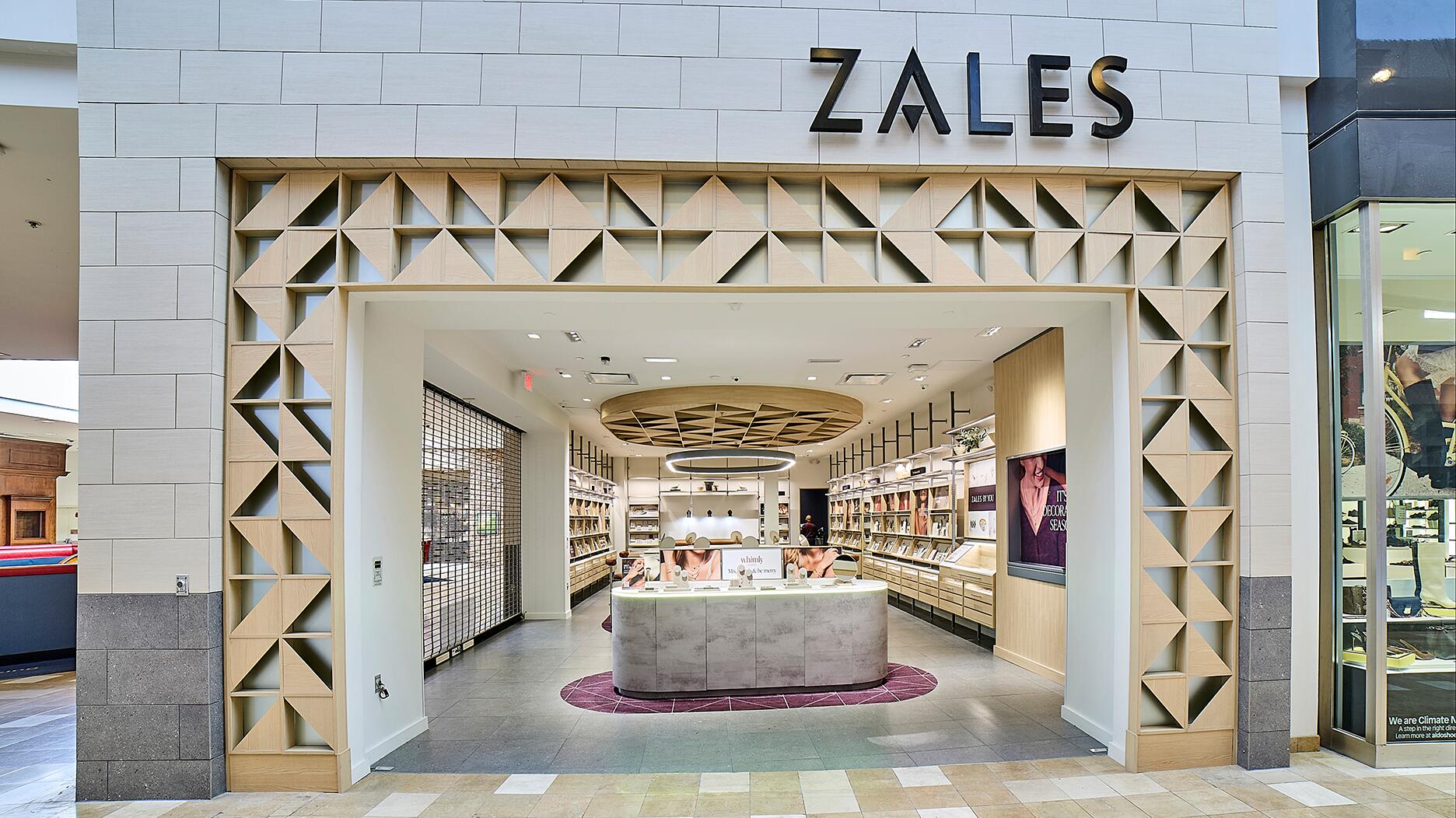The supplier has a curated list of must-have tools for jewelers doing in-house custom work this year.
Tiffany Is Now Telling Consumers the Origin of Its Diamonds
Next year, the jeweler will start sharing information on where stones were cut and polished.

There’s now a map inside with 10 pins dropped on countries from Canada to Australia above a plaque that reads: “In keeping with our commitment to responsible sourcing, we now provide provenance information for every newly sourced, individually registered diamond we set, a significant step for diamond transparency.”
The plaque and the map—both with touches of Tiffany blue, of course—are part of what the jeweler is calling the “Diamond Source Initiative,” which it rolled out worldwide last month.
Now when customers come into any of Tiffany’s 300-plus stores, salespeople will be able to tell them the country of origin for most “individually registered” diamonds—diamonds that are 0.18 carats or larger and have been laser-engraved with “T&Co.” and a unique serial number.
There are, of course, a couple exceptions.
Diamonds sourced from De Beers, which does not segregate production from its various mines in southern Africa and Canada, will be labeled “Botswana sort.” Most of the stones, Tiffany said, were mined in Botswana, with some originating from mines in Namibia, South Africa and Canada.
For diamonds that pre-date the program’s rollout, Tiffany said it will provide confirmation to consumers that the diamond was sourced responsibly.

Tiffany started sharing diamond origin in its stores on Jan. 9, though it could have begun doing so years ago.
Andy Hart, Tiffany’s senior vice president of diamond jewelry and supply, said former Chairman and CEO Michael Kowalski started Tiffany down the path of charting diamond origin in the late ‘90s.
In 2002, Tiffany established Laurelton Diamonds, the jeweler’s rough sourcing arm that is a De Beers sightholder, and a client of Alrosa and Canadian miner Dominion Diamond.
In 2003, it began laser-inscribing its diamonds with unique serial numbers that are recorded in a database that contains information about each stone’s journey from mine to market.
So, why wait until now to start sharing source information with consumers?
“For a long time, we felt we were doing it because it was the right thing to do, and it was good for the company and it was good for the industry,” Hart said. “I think our customers deserve to know what is going on behind the scenes.”

“We just felt like now was the right moment in Tiffany’s history to disclose the origin to our customers,” he said. “We really believe in the rarity and the incredible nature of diamonds. Diamonds grown in the lab have important uses in particular contexts and are going to perhaps have a greater use in the in the jewelry industry.”
But, Hart said, Tiffany won’t be using the stones in its jewelry.
“Natural diamonds create opportunity for people in countries where diamonds are a natural resource, such as Botswana. We believe in the opportunity to make, and we are making, a positive impact in those local communities.”
The Latest

Footage of a fight breaking out in the NYC Diamond District was viewed millions of times on Instagram and Facebook.

The governing board welcomed two new members, Claire Scragg and Susan Eisen.

How Jewelers of America’s 20 Under 40 are leading to ensure a brighter future for the jewelry industry.

Sparkle with festive diamond jewelry as we celebrate the beginning of 2026.


The master jeweler, Olympian, former senator, and Korean War veteran founded the brand Nighthorse Jewelry.

In its annual report, Pinterest noted an increase in searches for brooches, heirloom jewelry, and ‘80s luxury.

Roseco’s 704-page catalog showcases new lab-grown diamonds, findings, tools & more—available in print or interactive digital editions.

Executive Chairman Richard Baker will take over the role as rumors swirl that a bankruptcy filing is imminent for the troubled retailer.

Mohr had just retired in June after more than two decades as Couture’s retailer liaison.

Shekhar Shah of Real Gems Inc. will serve as president of the Indian Diamond & Colorstone Association in 2026.

This year’s good luck charm features the mythical horse Pegasus, and is our first Piece of the Week of the new year.

Articles about crime, engagement rings, and a necklace worn in the World Series generated the most interest among readers.

As part of the leadership transition, Sherry Smith will take on the role of vice president of coaching strategy and development.

It marks the third time the country has headed the Kimberley Process. Ghana will serve as vice chair.

The new Bulova x Stetson designs highlight two animals often associated with the American West—the bison and the Texas Longhorn.

Its residency at Yamron Jewelers will run through May 2026.

From influential executives to innovative designers, we pay tribute to the people we said goodbye to this year.

The retailer is expanding into areas with large Indian and South Asian populations.

The Italian brand has opened its first flagship amid the peaks of the Dolomites in Madonna di Campiglio, Italy.

The new curation at the Natural History Museum of Los Angeles County showcases rare gem and mineral specimens in their uncut, natural state.

The couple pleaded guilty to concealing at least $127 million in cash transactions at its precious metals businesses.

Consumers shared concerns about prices, inflation, tariffs, trade, and politics in the survey’s write-in response section.

In February 2026, the auction house will move its headquarters to the former Steinway Hall, a neoclassical landmark on Billionaires’ Row.

The new show will take place Jan. 23-25, 2026.

The former BHP Billiton leader and Gemfields chairman is remembered for his influential leadership throughout his 50-year mining career.

The LVMH-owned brand has partnered with the costume design union to revamp its award for 2026.


























